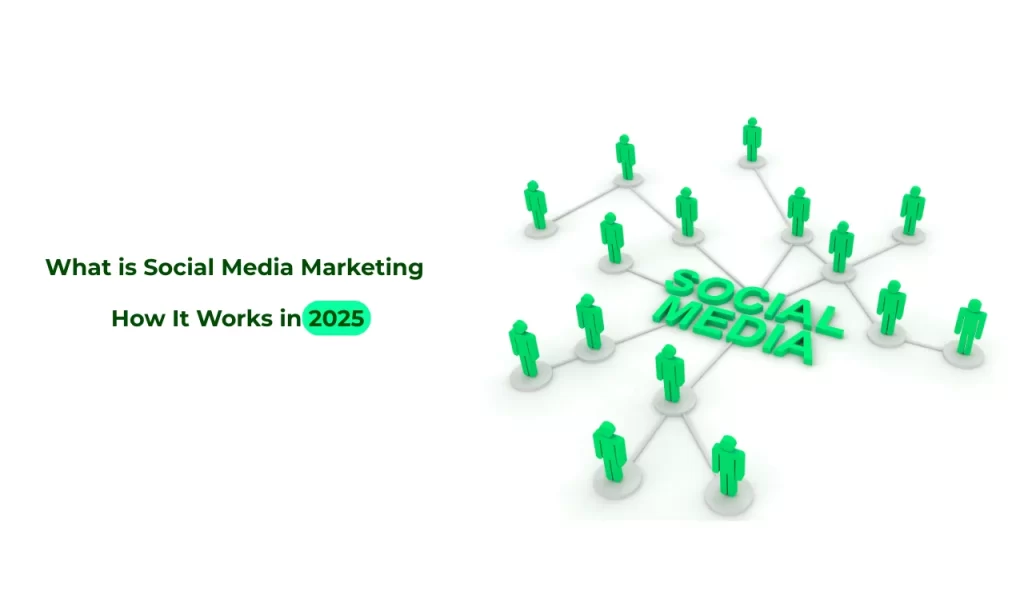Social media marketing (SMM) has emerged as one of the most popular forms of marketing to advertise products & services.
Here, you will learn what social media marketing is, the benefits it offers, and strategies that could help in making use of it for the growth of the business online.
1. What is Social Media Marketing?
1.1 Definition of Social Media Marketing
Social Media Marketing (SMM) is a simple process of advertising on social media networks to promote a business or its products as well as services.
The objective of SMM is to reach out to the target groups, develop relationships, and build a brand. There is no doubt that SMM is very useful for branding, increasing people’s attention, collecting new contacts, and turning users into customers.
Key objectives of SMM include: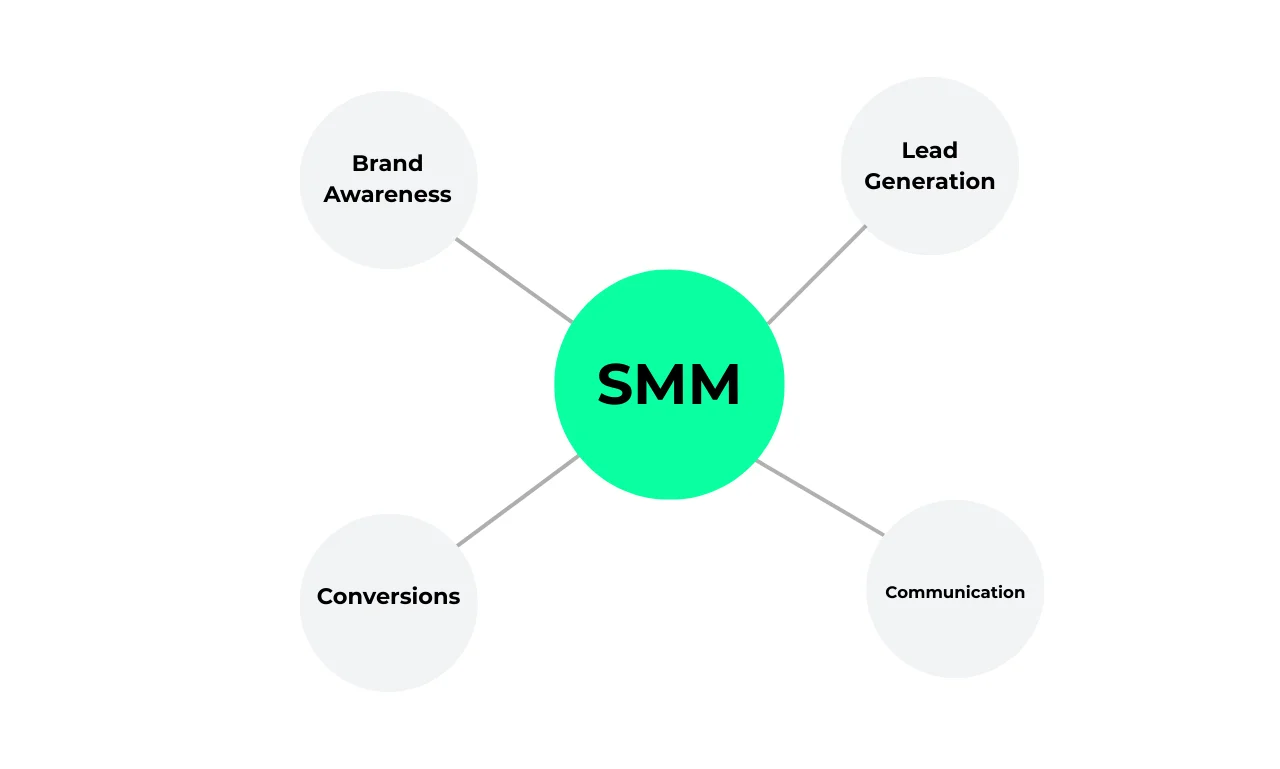
- Brand Awareness: You can target a wider market to raise awareness about your brand.
- Communication: You can communicate with your target audience through chat and the customer reviews section to achieve a higher level of interaction.
- Lead Generation: Making the leads aware of your business.
- Conversions: The procedure of converting pre-existing leads to becoming actual clients of the company.
1.2 How Social Media Marketing Works
There are several general parameters of social media marketing that will help you understand its working model: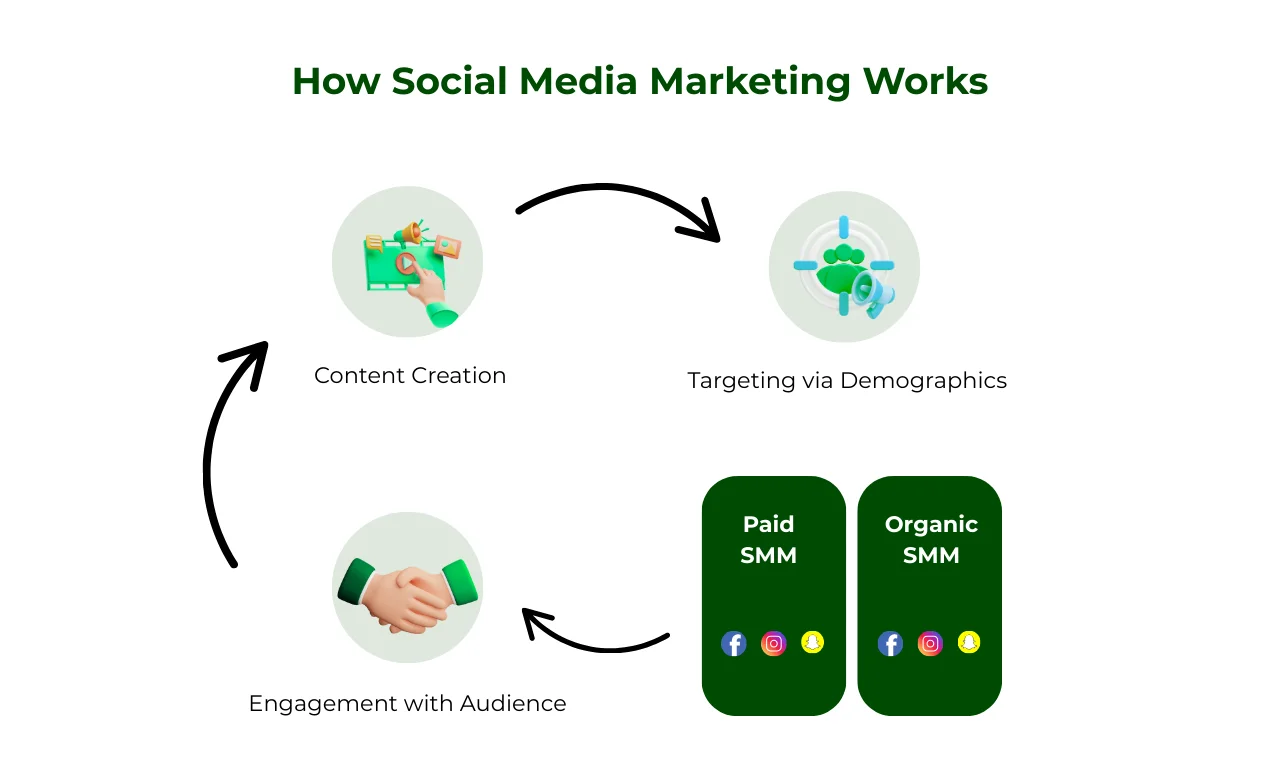
- Content Creation: Create content that would appeal to the desires and awareness of the target market. This includes posts in the form of text, photos, videos, and any other stories that find favor with your followers.
- Demographics and Interests: Reach the target audience using the demographic and interest data. Applications such as Facebook and Instagram even allow for the tweets to be segmented in such a way that the message is delivered to potential clients only.
- Engagement: Reply to the comments, messages, and mentions made by the target audience in a bid to foster a relationship with them. Interesting and stimulating material makes the users willing to interact with your brand as well as participate in its promotion.
SMM can be divided into two major types.
- Paid Social Media Marketing: Refers to the act of paying for the placement of the ad in the social networks. This can be sponsored posting, promoted posting, or even using paid ads or item promotions.
- Organic Social Media Marketing: It is the approach of developing promotions without using paid advertisement features. The goal lies in creating the community and stimulating the sharing and activity levels.
Each social networking site has its own recipes for how it functions and what it wants its users to post; that’s why getting familiar with these recipes is essential.
1.3 Evolution of Social Media Marketing
Social media marketing has not been and is not the same as it was in the early days of the use of such social sites. Nowadays, SMM has become a very special and rather complex area with many tendencies that define its further evolution: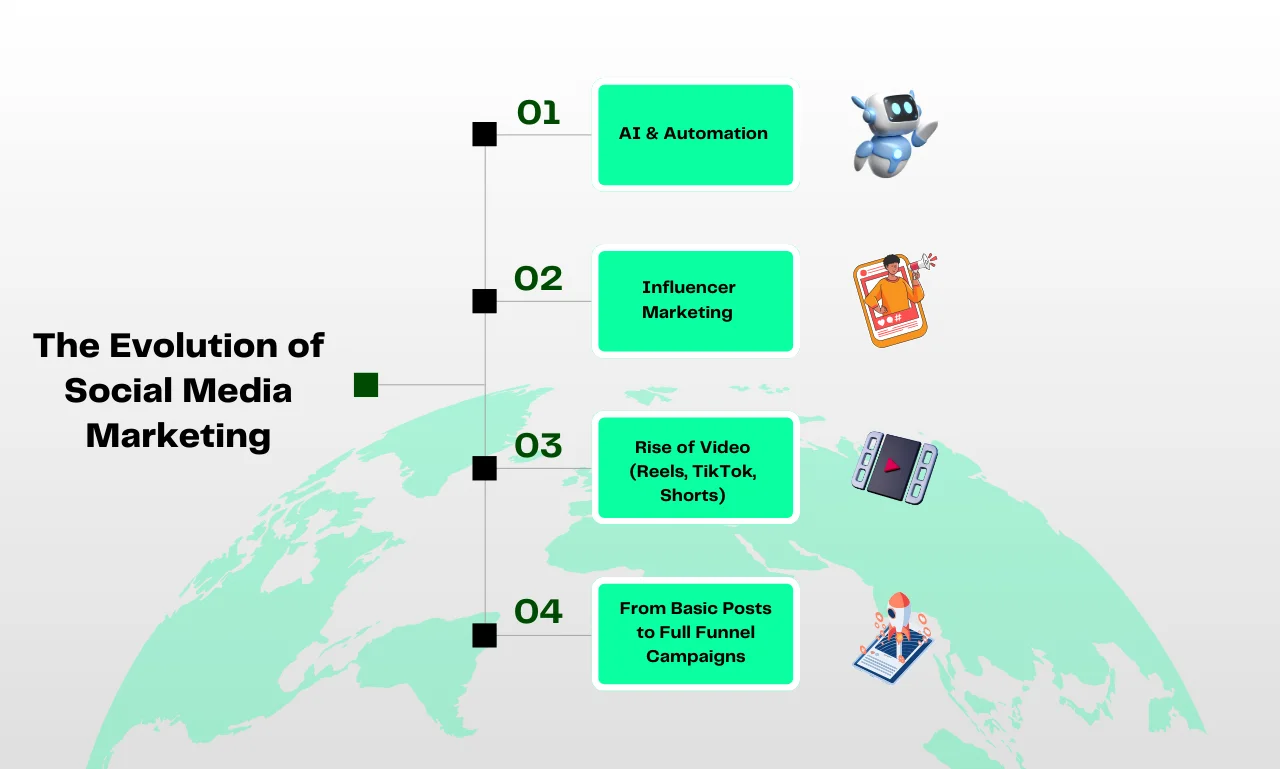
- AI and Automation: SMM is also employing the help of AI in making the content more personal and using automation to enhance the process.
- Influencer Marketing: Another measure that is aimed at reaching a larger target audience and increasing its trust.
- Video Marketing: Snapchat and other social networking sites have short-form video sections allowing users to focus more on engaging content.
2. Benefits of Social Media Marketing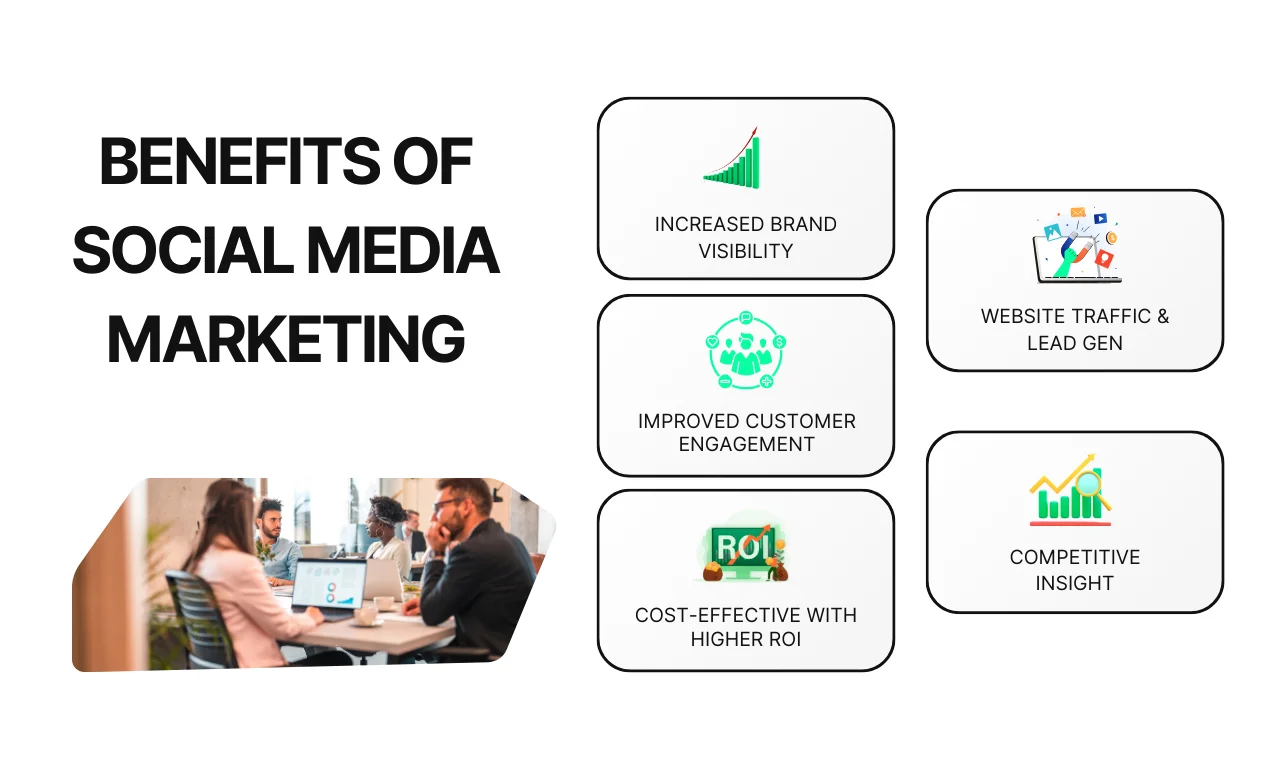
2.1 Increased Brand Awareness & Visibility
Leveraging the Internet has proven an advantage because it makes it possible to target a very large group of people. Currently, there are billions of active users on different platforms such as Facebook, Instagram, and Twitter, among others, which can help any business to access potential customers internationally.
2.2 Enhanced Customer Engagement & Loyalty
SMM offers an opportunity to deliver information to and receive information from customers directly. Another advantage of the appropriation of this platform for interactions is the ability to freely comment or message users, as well as promote various kinds of interaction that will only help the brands strengthen their position and improve customer loyalty. Managing the community can affect the image of the brand positively while at the same time ensuring the active participation of the users.
2.3 Cost-Effective Marketing & Higher ROI
As compared to the conventional methods of marketing, social media marketing stands out as less expensive. Gone are the days when placing advertisements was so costly. Nowadays, ad platforms give an account of numerous prices that help brands to set their campaign budget as they wish. Targeted advertising also guarantees that your content gets to the right people by minimizing wastage while at the same time increasing the chances of conversions.
2.4 Improved Website Traffic & Lead Generation
Today, social media marketing is an integral part of the Internet marketing strategy, and it can be used effectively to drive traffic to websites. By direct URLs, your intended clients are easily pulled by your content, products, or your landing page. This can be done by offering other materials such as free e-books and Webinars to attract the leads to sign up.
2.5 Competitive Advantage & Market Insights
The identified sources of information are all social media platforms, which allow getting insights about the industry and competition. Through active competition analysis as well as social listening, your brand can be in a position to get the views of your customers and, in turn, modify your strategies. The information could be used to fine-tune the marketing strategies to help you get a competitive edge.
3. How to Create a Social Media Marketing Strategy?
Here is a step-by-step guide on how to create and even analyze a social media marketing strategy.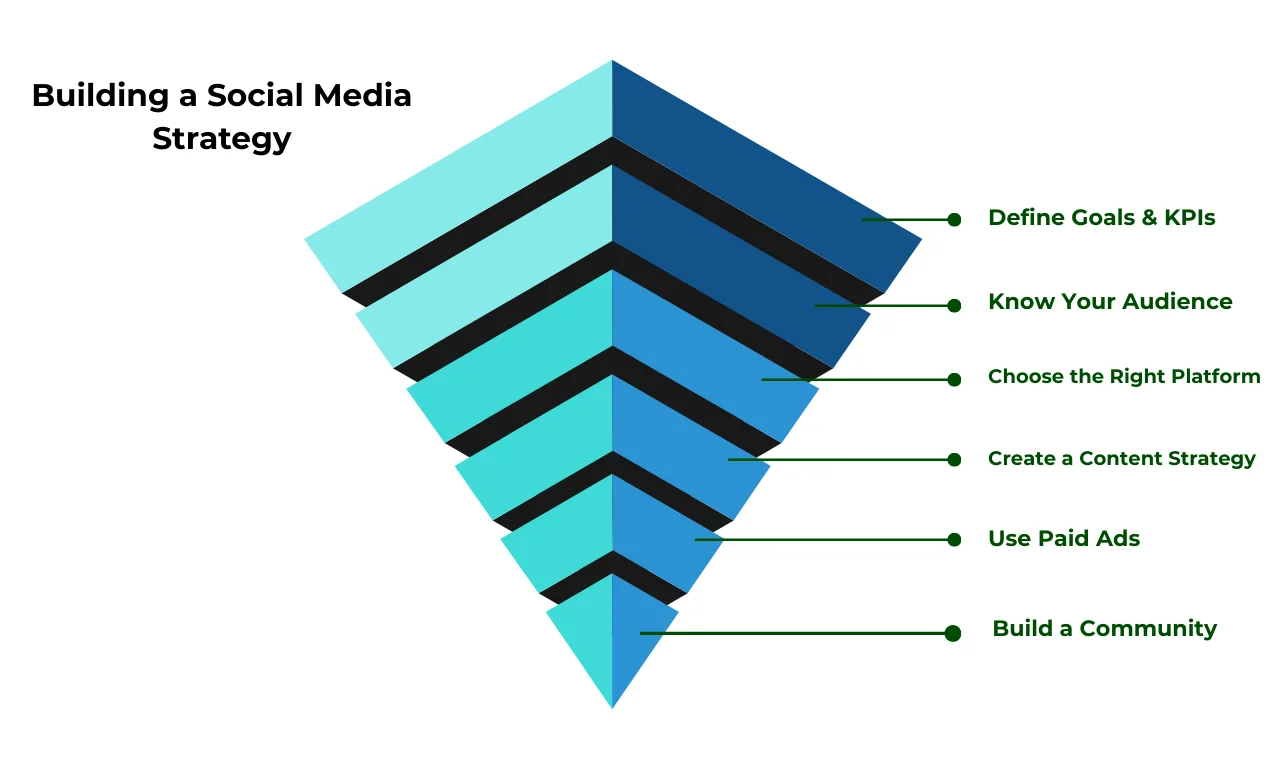
3.1 Define Your Goals & KPIs:
The basis of every social media plan is carried out on objectives and Key Performance Indicators (KPIs). What are the goals that you want to accomplish with your company through social media accounts? Such goals raise the awareness of the targeted audience, attract more visitors to the website, generate leads, increase sales, or enhance customer interactions.
After the goals have been set, you need to set measurable targets that will be useful in achieving your set goals. For example, if you are going to promote a website, KPIs could be the number of clicks through social networks to the site, new subscribers, or the bounce rate of the visits.
3.2 Identify Your Target Audience:
Knowing your audience is crucial. To begin with, develop clear and comprehensive buyer profiles that will reflect the ideal customers. You can consider elements such as age, gender, geographical location, interests, and activity on the internet. Audience analysis assists with customizing the content to appeal to the target audiences and to identify where the targeted audience can be reached.
3.3 Choose the Right Social Media Platforms:
All social media platforms are not the same, with varying degrees of popularity among staff members. Therefore, decide which platforms your audience uses most and where they would be interested in what you have to offer for effective promotion of your business. For instance, LinkedIn will suit business-to-business marketing best, while Instagram will be suitable for marketing content that has a powerful focus on graphics, and a younger audience will base their trust on Facebook marketing.
3.4 Develop a Content Strategy:
The phrase ‘’content is the king therefore holds true in social media marketing. This should contain the kind of content that will be posted (as in blogging, vlog, or even graphic content), the kind of voice and class of your messages, and the messages calendar. Sticking to a schedule is important to retain your subscribers’ interest, so schedule posts that will keep them busy.
3.5 Implement Paid Advertising & Boost Campaigns:
This relates to the idea that organic reach on its own cannot provide the results that you desire. Paid can help increase the number of visitors to your website and select the target audience. Facebook, Instagram, and LinkedIn have business promotion features where you can create and initiate certain ad campaigns that would suit your business needs and goals, which can be brand recognition, lead generation, or sales, among others.
3.6 Engage & Build a Community:
Communication right through the various social media platforms is also a two-way process. Always reply to comments, messages, and mentions as a way of engaging with the audiences of account. To build a community involving the users, encourage the sharing of messages from other users, and engaging posts. A loyal community is a good thing because, besides helping to spread your message, it also informs you as a person about its wishes and needs.
4. How to Analyze Your Social Media Marketing Impact & Results?
4.1 Key Metrics to Track
In the process of developing the strategy, identify the indicators that may correspond to them and monitor their changes. Examples of the key performance indicators include engagement level (likes, shares, comments), growth of the number of followers, click-through rates, conversion rates, and reach of posts. In this way, you can ascertain the efficiency of the strategy and define whether changes are appropriate or not.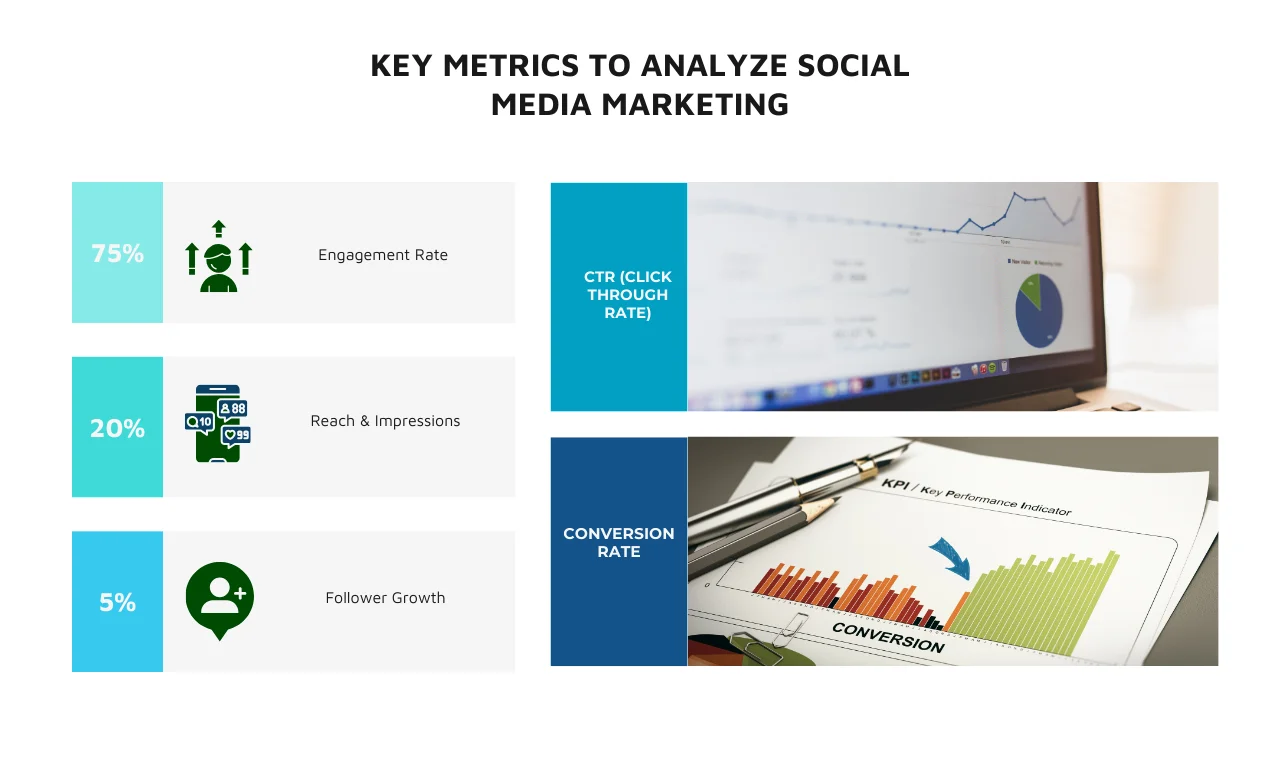
4.2 Tools for Social Media Analytics
Here, you can rely on three particular kinds of tools, such as analytical tools, third-party tools, and social apps.
- Analytics tools will help you track and analyze your social media performance.
- Apps like Facebook, Instagram, and Twitter also have net apps used to monitor the activity being done on Facebook, Instagram, & Twitter.
- As for the third-party services, Hootsuite, Buffer, and Sprout Social are capable of offering their customers various sets of analytics and reports.
4.3 Measuring ROI & Adjusting Strategies
It is very important to know your ROI in social media marketing, particularly to defend your spending decisions and make improvements in future undertakings.
Use the formula: Total revenues derived from the social media activity divided by the overall cost of such activities.
For those who are not bearing fruit as expected, you should know how to change strategies in the process. If such a strategic approach is used, then you must identify what aspects of the marketing and communication process are effective and what is not.
5. Social Media Marketing Tips for Success
5.1 Consistency is Key
Repetition helps to form the basis for any proper social media marketing strategy. It always pays to show up regularly and create a schedule to strengthen your brand’s online presence. Here are some tips regarding consistency:
- Craft a Content Calendar: One major strategy involves creating or developing a content calendar. This way, you can schedule the time when you will post the topics, and you will always have materials to post.
- Frequency of Posts: Decide how often you will post on your account based on the responses obtained from the targeted audience. Frequency is an important factor, and frequent predictions should be on a daily or weekly basis.
- Automating posting: Currently in the market, there are social media automation tools such as Buffer, Hootsuite, and Later that help manage the posting process without necessarily having to be in front of a computer.
5.2 Leverage Visual & Interactive Content
Visual content is more fulfilling and can be shared more easily than written content. That is why visual content is useful for a social media marketing strategy. This is how to optimize the use of it:
- High-Quality Images and Videos: Invest in professional photography and video production. There are other free tools, such as Canva and Adobe Spark, that you can use to develop good images.
- Infographics and GIFs: These can be used to simplify infographics and add some amount of fun elements to the posts.
- Live Videos and Stories: Instagram and Facebook are some of the most popular platforms that provide features like live video and stories through which it is possible to communicate with the viewers in real-time.
5.3 Use Hashtags & SEO Best Practices
Hashtags and SEO can be extremely useful in improving your brand’s visibility on social network sites:
- Hashtags to Expand Audiences: Research hashtags and utilize them appropriately in the targets’ posts. To identify trending and effective hashtags, you can use such tools as hashtags.
- SEO for Social Media: This is the process of enhancing the business profiles and posts to be friendly to the search engines so they to be easily found by the target sector. This involves using keywords when designing your bio, captions, and hashtags.
- Interact with Your Audience: This is a very critical box that organizations should tick, and reply to comments and messages as they occur. While increasing the viewership, it also helps improve the algorithm score of your platform.
5.4 Collaborate with Influencers & Brands
Working with influencers and other brands that are active in the same niche might help to increase the audience and credibility of your brand.
- Target Selective and Specific Influencers: To target the right people, identify influencers who have the audience that you desire. Microbloggers’ influence seems strong and loyal audience. Additionally, they are cheaper to hire.
- Co-Marketing Campaigns: This involves creating co-marketing campaigns related to other brands. This may refer to setting up co-promotions as well as offering sweepstakes and other kinds of integrations in content.
- Cooperative Actions: Check that any kind of cooperation appears to be organic and corresponds to your brand’s values to become credible.
5.5 Stay Updated with Algorithm Changes
Most social media apps change their algorithms from time to time, affecting the visibility and interaction of the content:
- Get Industry News: You need to read and understand updates from the various blogs and news sites that focus on the particular industry of your business and follow the business-related social media news feeds.
- Remain Updated: Change up both the type of content posted and the time at which it is posted because of the changes in the new algorithm.
- Interact with the Community: Join forums or social networking sites where its members share information most often about updates and alterations.
6. The Best Social Media Marketing Platforms in 2024
One important aspect that many businesses with a social media marketing plan have to work on keenly is the selection of the right social media platforms. Below are the top platforms for 2024: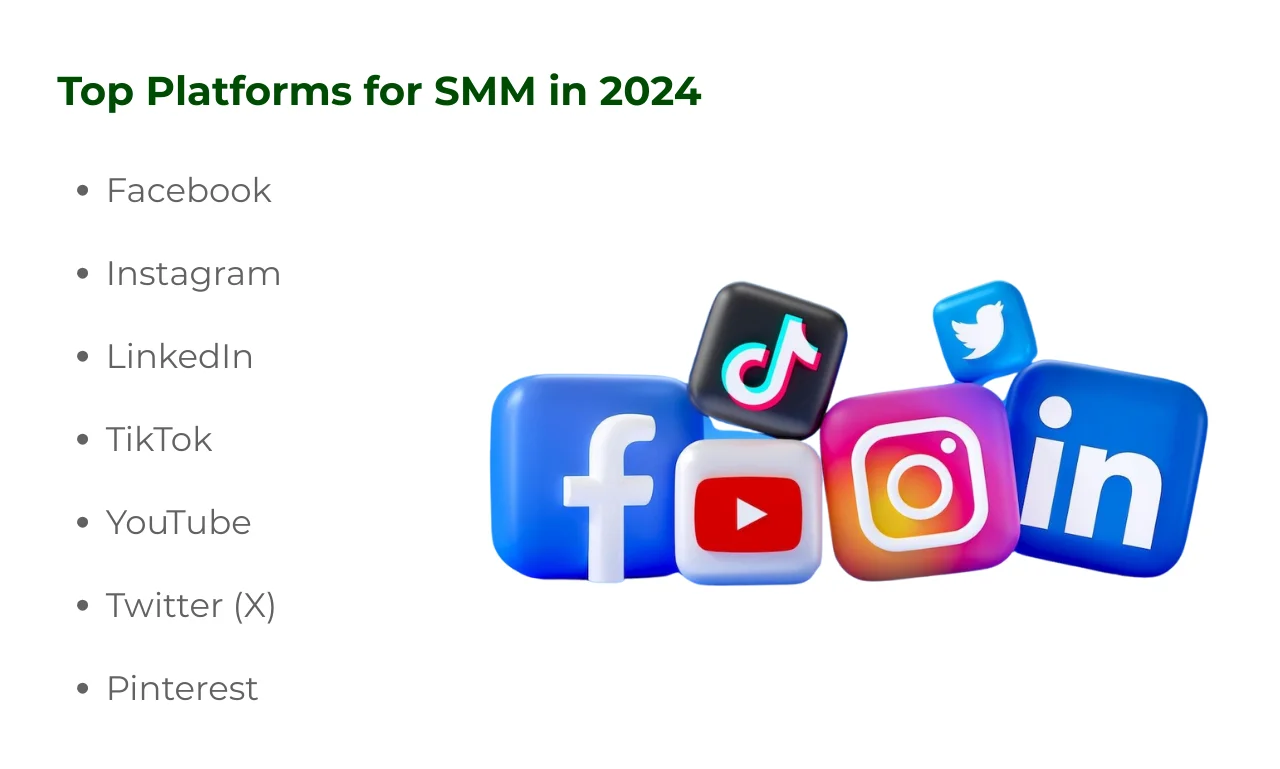
6.1 Facebook
- Target Group: As stated earlier, Facebook boasts of over 2 billion active users, meaning that it is an effective tool for reaching out to audiences.
- Functionalities: Facebook business sites, Facebook groups, Facebook events, and the Facebook marketplace.
- Recommendations: Emphasis should be made on the use of Groups to foster communication and the use of content that is likely to generate traffic. To effectively market, Facebook Ads are always employed as a means of reaching particular groups of people.
6.2 Instagram
Instagram has become popular among youths, which is why it is more suitable for the selling of brands associated with visual products.
- Available content types: Offers post, story, reel, and IGTV for different types of content.
- Promotion Techniques: The high-quality image and video popularity of Instagram must be used for posting attractive pictures and video promos. Stories and Reels are both very effective when you need to reach out to your audience with timely and compelling content.
6.3 LinkedIn
- Targeted audience: A business-oriented platform that is perfect for advertising to potential business partners.
- Features: Among the prominent presented features are Articles, LinkedIn Groups, and LinkedIn Ads.
- Tips: As a proposed content format, it is about the 40/40/20 rule if sharing insights on related industry and company news to position oneself as a thought leader. Choose comments and discussions to be involved with your friend list.
6.4 TikTok
- Audience: Dominates among Gen Z and Millennials with its short-form video content.
- New Features: The application has TikTok for Business and TikTok Shop available.
- Be sure to devote your attention to creativity and the uniqueness of content. Arguably, it is crucial to engage in trends and challenges to gain more visibility.
6.5 YouTube
- Audience: The second largest search engine with a broad audience base.
- Key Promotion Features: It allows easy upload of videos and live streaming, and has an enhanced advertising opportunity.
6.6 Twitter (X)
Regarding its suitability, the following audiences can use it:
- Capabilities: Allows for text, images, GIFs, and video.
- Suggestions: For instance, use Twitter in cases of account brief updates, customer information, and engaging in trends. Converse with the audience by using polls, quizzes, and question-and-answer activities.
6.7 Pinterest
- Target group: Mainly the group of people who seek inspiration, including home decoration, fashion, food, and recipes.
- Integration & Compatibility: It offers Pins, Boards, and Rich Pins.
- Lessons Learned: The pins and boards should be appealing to the eye.
Conclusion
With several strategies implemented in social media marketing, it is possible to revolutionize the growth of any enterprise by increasing awareness. Therefore, in assessing how social media can help to achieve your business objectives, you need to comprehend your goals and objectives, identify your target audience, and select the appropriate platform for your business, as well as constantly monitor the effectiveness of your presence on social media platforms.
We at Three Angle Marketing are dedicated to assisting you to concerning social media marketing, which will assist your brand not only to find its place but to grow and develop as well. We will continue to dispense more guides, ideas, and tips to help you in your marketing strategies.

